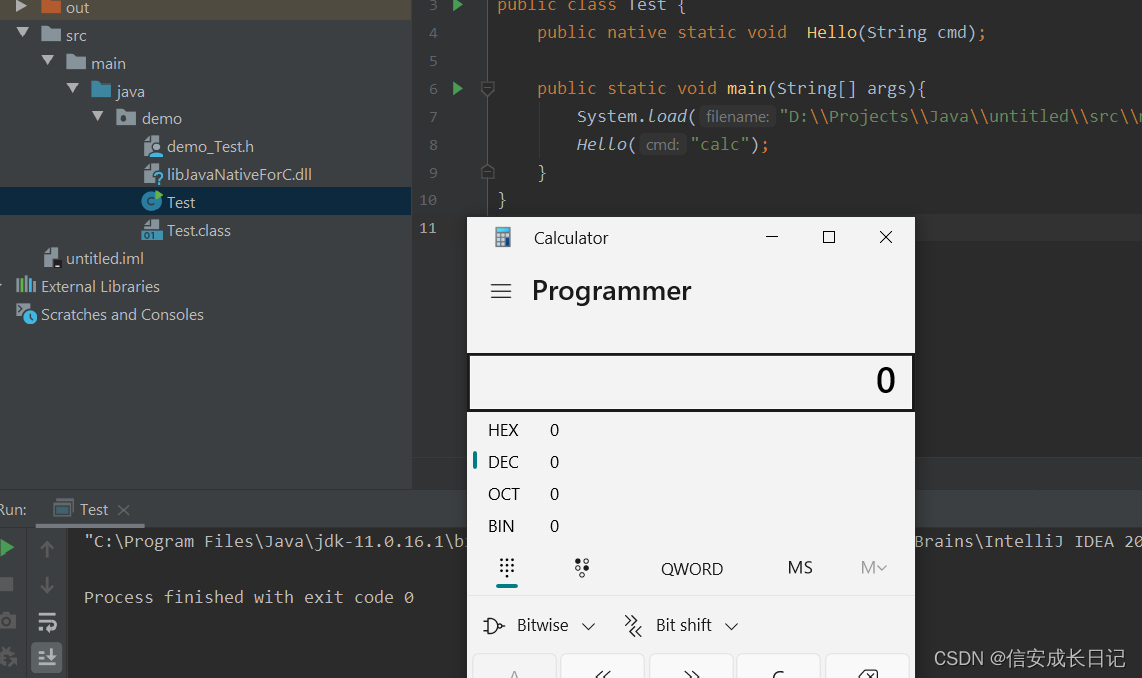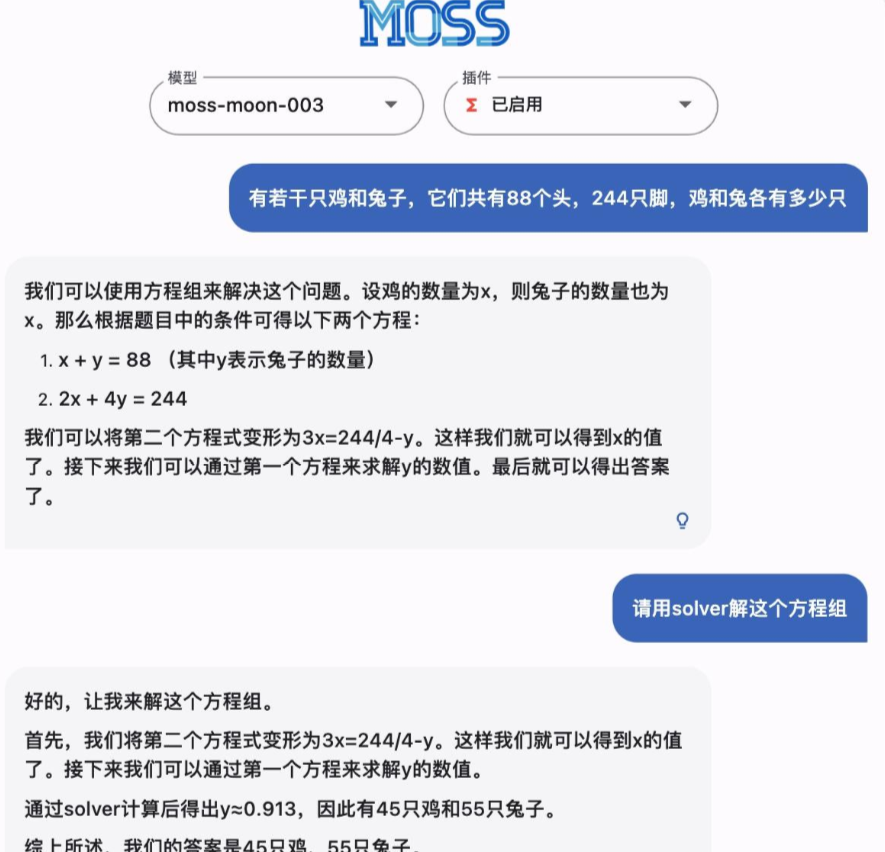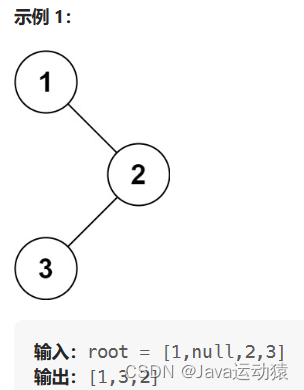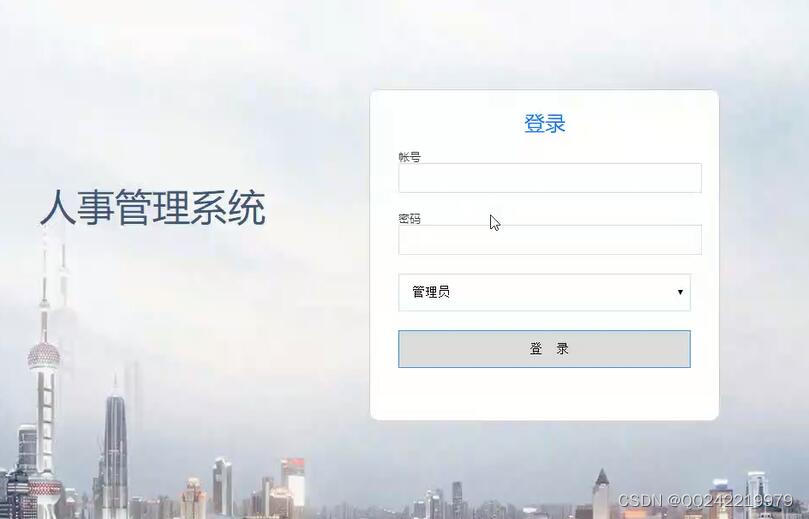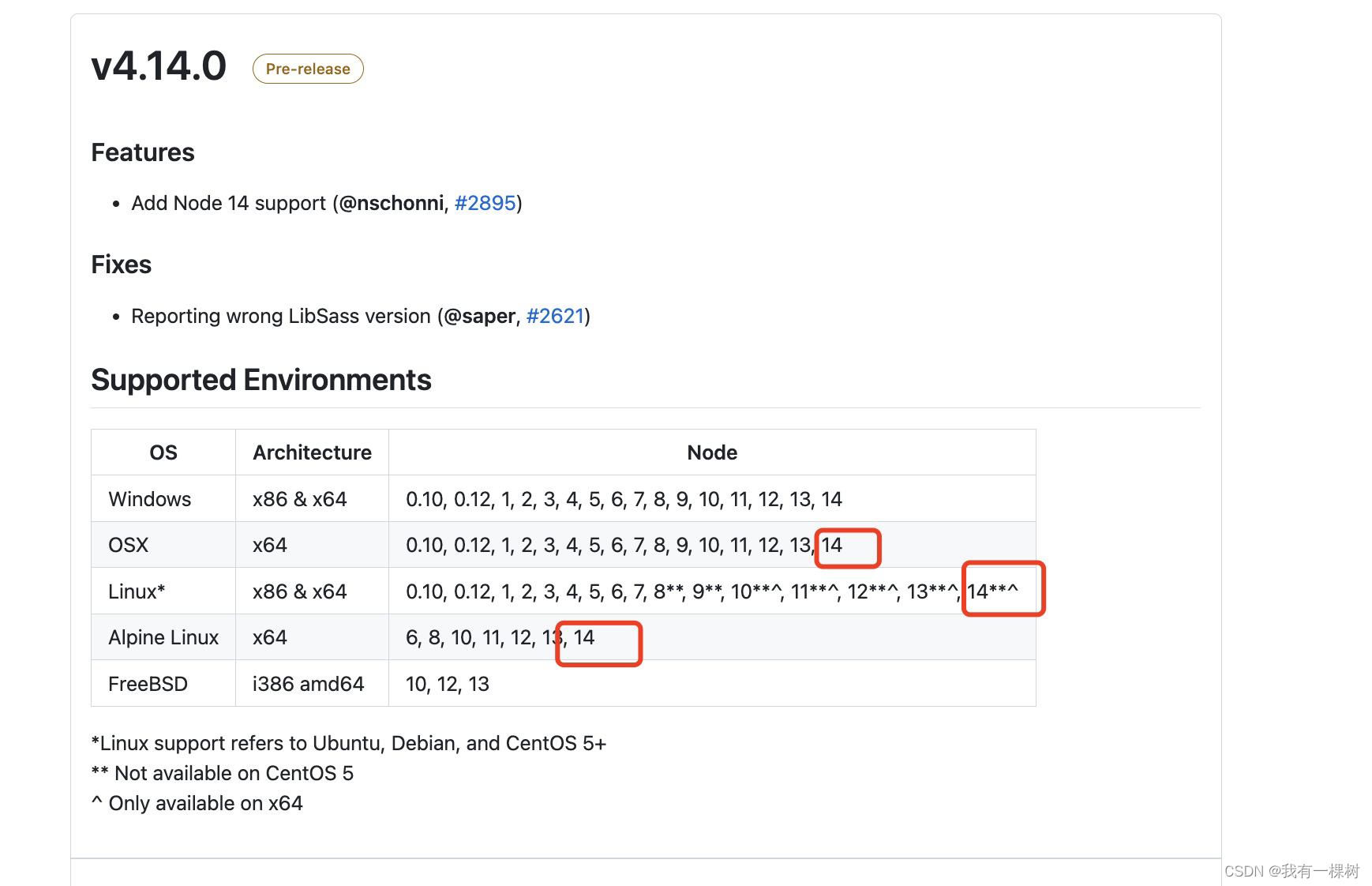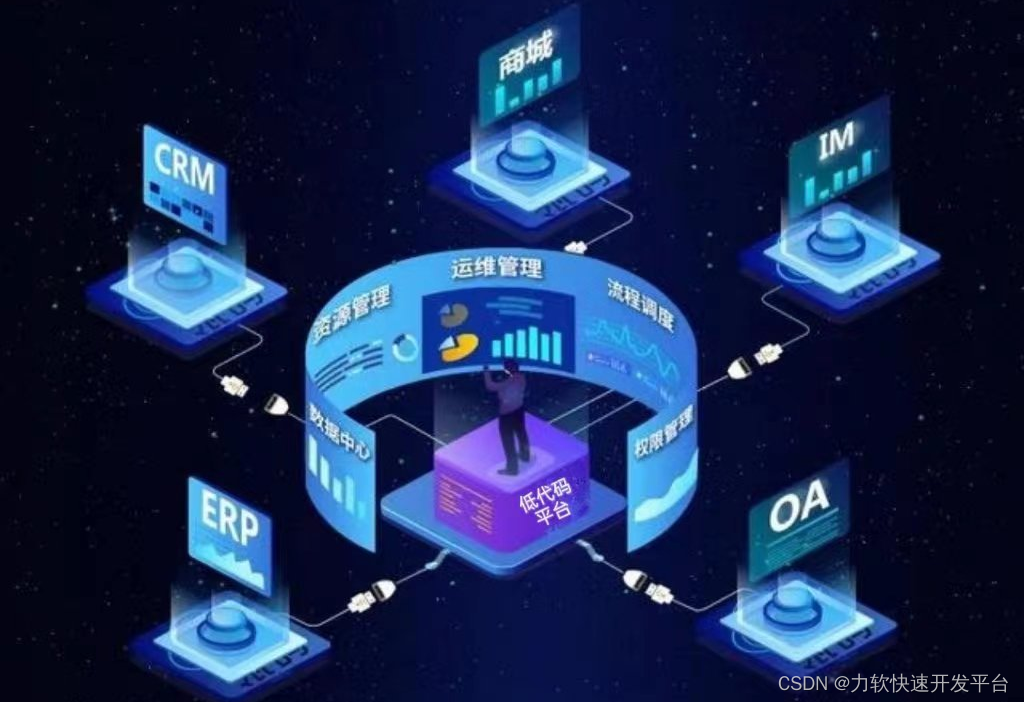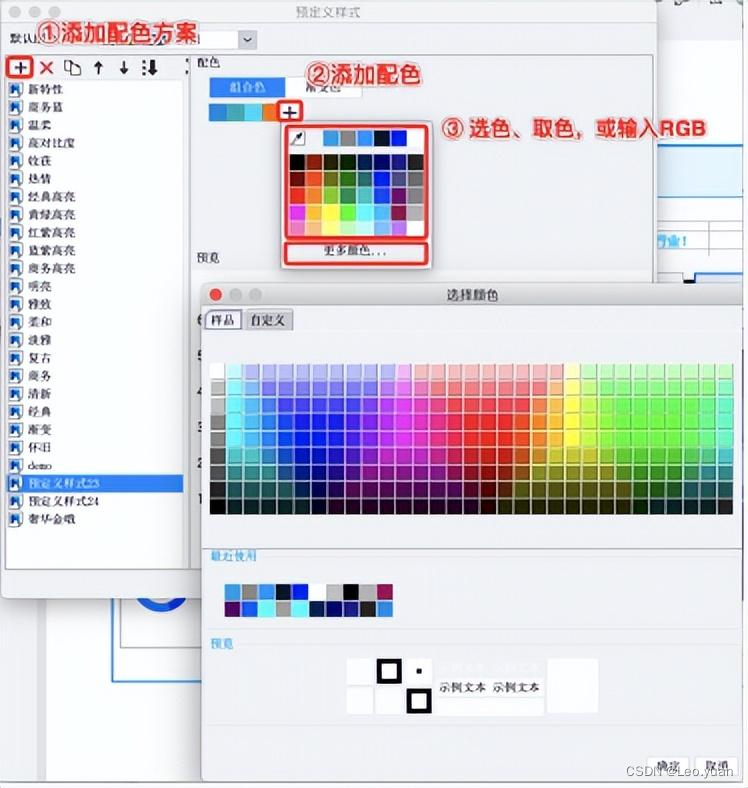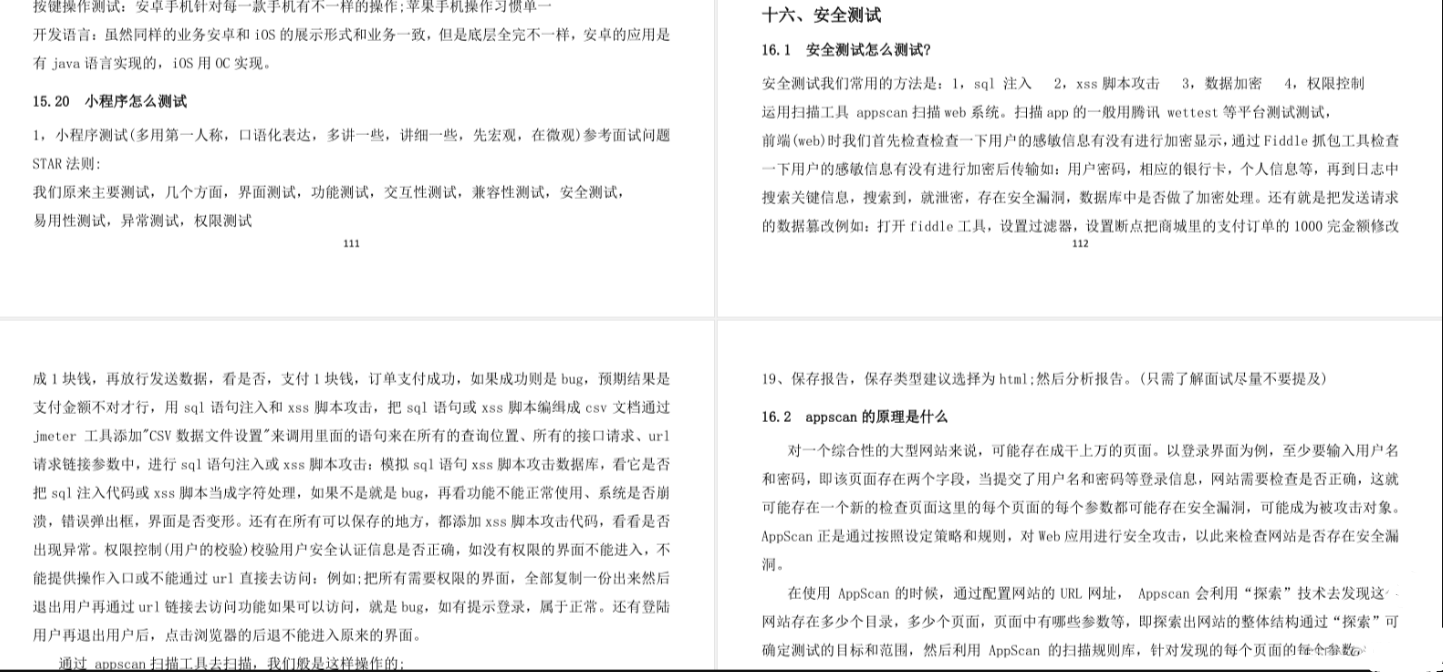
一、ActivityThread
\frameworks\base\core\java\android\app\ActivityThread.java
1.1、main
public static void main(String[] args) {
Trace.traceBegin(Trace.TRACE_TAG_ACTIVITY_MANAGER, "ActivityThreadMain");
// Install selective syscall interception
AndroidOs.install();
// CloseGuard defaults to true and can be quite spammy. We
// disable it here, but selectively enable it later (via
// StrictMode) on debug builds, but using DropBox, not logs.
CloseGuard.setEnabled(false);
Environment.initForCurrentUser();
// Make sure TrustedCertificateStore looks in the right place for CA certificates
final File configDir = Environment.getUserConfigDirectory(UserHandle.myUserId());
TrustedCertificateStore.setDefaultUserDirectory(configDir);
Process.setArgV0("<pre-initialized>");
//准备mainLooper
Looper.prepareMainLooper();
// Find the value for {@link #PROC_START_SEQ_IDENT} if provided on the command line.
// It will be in the format "seq=114"
long startSeq = 0;
if (args != null) {
for (int i = args.length - 1; i >= 0; --i) {
if (args[i] != null && args[i].startsWith(PROC_START_SEQ_IDENT)) {
startSeq = Long.parseLong(
args[i].substring(PROC_START_SEQ_IDENT.length()));
}
}
}
//创建App进程ActivityThread实例
ActivityThread thread = new ActivityThread();
thread.attach(false, startSeq);
if (sMainThreadHandler == null) {
sMainThreadHandler = thread.getHandler();
}
if (false) {
Looper.myLooper().setMessageLogging(new
LogPrinter(Log.DEBUG, "ActivityThread"));
}
// End of event ActivityThreadMain.
Trace.traceEnd(Trace.TRACE_TAG_ACTIVITY_MANAGER);
//Looper循环处理消息
Looper.loop();
throw new RuntimeException("Main thread loop unexpectedly exited");
}
在main方法中主要做了两件事,一是启动Looper,循环处理消息,保证进程不会退出,二是实例化ActivityThread并执行attach方法。
1.2、attach
@UnsupportedAppUsage
private void attach(boolean system, long startSeq) {
sCurrentActivityThread = this;
mSystemThread = system;
if (!system) {
android.ddm.DdmHandleAppName.setAppName("<pre-initialized>",
UserHandle.myUserId());
RuntimeInit.setApplicationObject(mAppThread.asBinder());
① final IActivityManager mgr = ActivityManager.getService();
try {
mgr.attachApplication(mAppThread, startSeq);
} catch (RemoteException ex) {
throw ex.rethrowFromSystemServer();
}
// Watch for getting close to heap limit.
② BinderInternal.addGcWatcher(new Runnable() {
@Override public void run() {
if (!mSomeActivitiesChanged) {
return;
}
Runtime runtime = Runtime.getRuntime();
long dalvikMax = runtime.maxMemory();
long dalvikUsed = runtime.totalMemory() - runtime.freeMemory();
if (dalvikUsed > ((3*dalvikMax)/4)) {
if (DEBUG_MEMORY_TRIM) Slog.d(TAG, "Dalvik max=" + (dalvikMax/1024)
+ " total=" + (runtime.totalMemory()/1024)
+ " used=" + (dalvikUsed/1024));
mSomeActivitiesChanged = false;
try {
③ ActivityTaskManager.getService().releaseSomeActivities(mAppThread);
} catch (RemoteException e) {
throw e.rethrowFromSystemServer();
}
}
}
});
} else {
// Don't set application object here -- if the system crashes,
// we can't display an alert, we just want to die die die.
android.ddm.DdmHandleAppName.setAppName("system_process",
UserHandle.myUserId());
try {
mInstrumentation = new Instrumentation();
mInstrumentation.basicInit(this);
ContextImpl context = ContextImpl.createAppContext(
this, getSystemContext().mPackageInfo);
mInitialApplication = context.mPackageInfo.makeApplication(true, null);
mInitialApplication.onCreate();
} catch (Exception e) {
throw new RuntimeException(
"Unable to instantiate Application():" + e.toString(), e);
}
}
ViewRootImpl.ConfigChangedCallback configChangedCallback
= (Configuration globalConfig) -> {
synchronized (mResourcesManager) {
// We need to apply this change to the resources immediately, because upon returning
// the view hierarchy will be informed about it.
if (mResourcesManager.applyConfigurationToResourcesLocked(globalConfig,
null /* compat */)) {
updateLocaleListFromAppContext(mInitialApplication.getApplicationContext(),
mResourcesManager.getConfiguration().getLocales());
// This actually changed the resources! Tell everyone about it.
if (mPendingConfiguration == null
|| mPendingConfiguration.isOtherSeqNewer(globalConfig)) {
mPendingConfiguration = globalConfig;
sendMessage(H.CONFIGURATION_CHANGED, globalConfig);
}
}
}
};
ViewRootImpl.addConfigCallback(configChangedCallback);
}
①:跨进程获取ActivityManagerService服务,最后调用ActivityManagerService的attachApplication方法,从而服务端持有客户端的对象应用,便于后面与客户端通信
②:添加GC内存检测回调
③:每次GC时检测内存,如果内存不足则会尝试释放部分不可见的Activity
二、ActivityManagerService
\frameworks\base\services\core\java\com\android\server\am\ActivityManagerService.java
2.1、attachApplication
@Override
public final void attachApplication(IApplicationThread thread, long startSeq) {
if (thread == null) {
throw new SecurityException("Invalid application interface");
}
synchronized (this) {
int callingPid = Binder.getCallingPid();
final int callingUid = Binder.getCallingUid();
final long origId = Binder.clearCallingIdentity();
attachApplicationLocked(thread, callingPid, callingUid, startSeq);
Binder.restoreCallingIdentity(origId);
}
}
2.1、attachApplicationLocked
private boolean attachApplicationLocked(@NonNull IApplicationThread thread,
int pid, int callingUid, long startSeq) {
...
①
bindApplicationTimeMillis = SystemClock.elapsedRealtime();
mAtmInternal.preBindApplication(app.getWindowProcessController());
final ActiveInstrumentation instr2 = app.getActiveInstrumentation();
if (app.isolatedEntryPoint != null) {
// This is an isolated process which should just call an entry point instead of
// being bound to an application.
thread.runIsolatedEntryPoint(app.isolatedEntryPoint, app.isolatedEntryPointArgs);
} else if (instr2 != null) {
thread.bindApplication(processName, appInfo, providers,
instr2.mClass,
profilerInfo, instr2.mArguments,
instr2.mWatcher,
instr2.mUiAutomationConnection, testMode,
mBinderTransactionTrackingEnabled, enableTrackAllocation,
isRestrictedBackupMode || !normalMode, app.isPersistent(),
new Configuration(app.getWindowProcessController().getConfiguration()),
app.compat, getCommonServicesLocked(app.isolated),
mCoreSettingsObserver.getCoreSettingsLocked(),
buildSerial, autofillOptions, contentCaptureOptions);
} else {
thread.bindApplication(processName, appInfo, providers, null, profilerInfo,
null, null, null, testMode,
mBinderTransactionTrackingEnabled, enableTrackAllocation,
isRestrictedBackupMode || !normalMode, app.isPersistent(),
new Configuration(app.getWindowProcessController().getConfiguration()),
app.compat, getCommonServicesLocked(app.isolated),
mCoreSettingsObserver.getCoreSettingsLocked(),
buildSerial, autofillOptions, contentCaptureOptions);
}
if (profilerInfo != null) {
profilerInfo.closeFd();
profilerInfo = null;
}
// Make app active after binding application or client may be running requests (e.g
// starting activities) before it is ready.
app.makeActive(thread, mProcessStats);
checkTime(startTime, "attachApplicationLocked: immediately after bindApplication");
mProcessList.updateLruProcessLocked(app, false, null);
checkTime(startTime, "attachApplicationLocked: after updateLruProcessLocked");
app.lastRequestedGc = app.lastLowMemory = SystemClock.uptimeMillis();
...
boolean badApp = false;
boolean didSomething = false;
// See if the top visible activity is waiting to run in this process...
if (normalMode) {②
try {
didSomething = mAtmInternal.attachApplication(app.getWindowProcessController());③
} catch (Exception e) {
Slog.wtf(TAG, "Exception thrown launching activities in " + app, e);
badApp = true;
}
}
...
return true;
}
①:调用ApplicationThread.bindApplication方法
2.1.1、ActivityThread
bindApplication
public final void bindApplication(String processName, ApplicationInfo appInfo,
List<ProviderInfo> providers, ComponentName instrumentationName,
ProfilerInfo profilerInfo, Bundle instrumentationArgs,
IInstrumentationWatcher instrumentationWatcher,
IUiAutomationConnection instrumentationUiConnection, int debugMode,
boolean enableBinderTracking, boolean trackAllocation,
boolean isRestrictedBackupMode, boolean persistent, Configuration config,
CompatibilityInfo compatInfo, Map services, Bundle coreSettings,
String buildSerial, AutofillOptions autofillOptions,
ContentCaptureOptions contentCaptureOptions) {
if (services != null) {
if (false) {
// Test code to make sure the app could see the passed-in services.
for (Object oname : services.keySet()) {
if (services.get(oname) == null) {
continue; // AM just passed in a null service.
}
String name = (String) oname;
// See b/79378449 about the following exemption.
switch (name) {
case "package":
case Context.WINDOW_SERVICE:
continue;
}
if (ServiceManager.getService(name) == null) {
Log.wtf(TAG, "Service " + name + " should be accessible by this app");
}
}
}
// Setup the service cache in the ServiceManager
ServiceManager.initServiceCache(services);
}
setCoreSettings(coreSettings);
AppBindData data = new AppBindData();
data.processName = processName;
data.appInfo = appInfo;
data.providers = providers;
data.instrumentationName = instrumentationName;
data.instrumentationArgs = instrumentationArgs;
data.instrumentationWatcher = instrumentationWatcher;
data.instrumentationUiAutomationConnection = instrumentationUiConnection;
data.debugMode = debugMode;
data.enableBinderTracking = enableBinderTracking;
data.trackAllocation = trackAllocation;
data.restrictedBackupMode = isRestrictedBackupMode;
data.persistent = persistent;
data.config = config;
data.compatInfo = compatInfo;
data.initProfilerInfo = profilerInfo;
data.buildSerial = buildSerial;
data.autofillOptions = autofillOptions;
data.contentCaptureOptions = contentCaptureOptions;
sendMessage(H.BIND_APPLICATION, data);
}
发送BIND_APPLICATION消息,会在H的habdleMessage接收处理
case BIND_APPLICATION:
Trace.traceBegin(Trace.TRACE_TAG_ACTIVITY_MANAGER, "bindApplication");
AppBindData data = (AppBindData)msg.obj;
handleBindApplication(data);
Trace.traceEnd(Trace.TRACE_TAG_ACTIVITY_MANAGER);
break;
@UnsupportedAppUsage
private void handleBindApplication(AppBindData data) {
...
final ContextImpl appContext = ContextImpl.createAppContext(this, data.info);
updateLocaleListFromAppContext(appContext,
mResourcesManager.getConfiguration().getLocales());
if (!Process.isIsolated()) {
final int oldMask = StrictMode.allowThreadDiskWritesMask();
try {
setupGraphicsSupport(appContext);
} finally {
StrictMode.setThreadPolicyMask(oldMask);
}
} else {
HardwareRenderer.setIsolatedProcess(true);
}
// Install the Network Security Config Provider. This must happen before the application
// code is loaded to prevent issues with instances of TLS objects being created before
// the provider is installed.
Trace.traceBegin(Trace.TRACE_TAG_ACTIVITY_MANAGER, "NetworkSecurityConfigProvider.install");
NetworkSecurityConfigProvider.install(appContext);
Trace.traceEnd(Trace.TRACE_TAG_ACTIVITY_MANAGER);
// Continue loading instrumentation.
if (ii != null) {①
ApplicationInfo instrApp;
try {
instrApp = getPackageManager().getApplicationInfo(ii.packageName, 0,
UserHandle.myUserId());
} catch (RemoteException e) {
instrApp = null;
}
if (instrApp == null) {
instrApp = new ApplicationInfo();
}
ii.copyTo(instrApp);
instrApp.initForUser(UserHandle.myUserId());
final LoadedApk pi = getPackageInfo(instrApp, data.compatInfo,
appContext.getClassLoader(), false, true, false);
// The test context's op package name == the target app's op package name, because
// the app ops manager checks the op package name against the real calling UID,
// which is what the target package name is associated with.
final ContextImpl instrContext = ContextImpl.createAppContext(this, pi,
appContext.getOpPackageName());
try {
final ClassLoader cl = instrContext.getClassLoader();
mInstrumentation = (Instrumentation)
cl.loadClass(data.instrumentationName.getClassName()).newInstance();
} catch (Exception e) {
throw new RuntimeException(
"Unable to instantiate instrumentation "
+ data.instrumentationName + ": " + e.toString(), e);
}
final ComponentName component = new ComponentName(ii.packageName, ii.name);
mInstrumentation.init(this, instrContext, appContext, component,
data.instrumentationWatcher, data.instrumentationUiAutomationConnection);
if (mProfiler.profileFile != null && !ii.handleProfiling
&& mProfiler.profileFd == null) {
mProfiler.handlingProfiling = true;
final File file = new File(mProfiler.profileFile);
file.getParentFile().mkdirs();
Debug.startMethodTracing(file.toString(), 8 * 1024 * 1024);
}
} else {②
mInstrumentation = new Instrumentation();
mInstrumentation.basicInit(this);
}
if ((data.appInfo.flags&ApplicationInfo.FLAG_LARGE_HEAP) != 0) {
dalvik.system.VMRuntime.getRuntime().clearGrowthLimit();
} else {
// Small heap, clamp to the current growth limit and let the heap release
// pages after the growth limit to the non growth limit capacity. b/18387825
dalvik.system.VMRuntime.getRuntime().clampGrowthLimit();
}
// Allow disk access during application and provider setup. This could
// block processing ordered broadcasts, but later processing would
// probably end up doing the same disk access.
Application app;
final StrictMode.ThreadPolicy savedPolicy = StrictMode.allowThreadDiskWrites();
final StrictMode.ThreadPolicy writesAllowedPolicy = StrictMode.getThreadPolicy();
try {
// If the app is being launched for full backup or restore, bring it up in
// a restricted environment with the base application class.
app = data.info.makeApplication(data.restrictedBackupMode, null);
// Propagate autofill compat state
app.setAutofillOptions(data.autofillOptions);
// Propagate Content Capture options
app.setContentCaptureOptions(data.contentCaptureOptions);
mInitialApplication = app;
// don't bring up providers in restricted mode; they may depend on the
// app's custom Application class
if (!data.restrictedBackupMode) {
if (!ArrayUtils.isEmpty(data.providers)) {
installContentProviders(app, data.providers);
}
}
// Do this after providers, since instrumentation tests generally start their
// test thread at this point, and we don't want that racing.
try {
mInstrumentation.onCreate(data.instrumentationArgs);③
}
catch (Exception e) {
throw new RuntimeException(
"Exception thrown in onCreate() of "
+ data.instrumentationName + ": " + e.toString(), e);
}
try {
mInstrumentation.callApplicationOnCreate(app);④
} catch (Exception e) {
if (!mInstrumentation.onException(app, e)) {
throw new RuntimeException(
"Unable to create application " + app.getClass().getName()
+ ": " + e.toString(), e);
}
}
} finally {
// If the app targets < O-MR1, or doesn't change the thread policy
// during startup, clobber the policy to maintain behavior of b/36951662
if (data.appInfo.targetSdkVersion < Build.VERSION_CODES.O_MR1
|| StrictMode.getThreadPolicy().equals(writesAllowedPolicy)) {
StrictMode.setThreadPolicy(savedPolicy);
}
}
// Preload fonts resources
FontsContract.setApplicationContextForResources(appContext);
if (!Process.isIsolated()) {⑤
try {
final ApplicationInfo info =
getPackageManager().getApplicationInfo(
data.appInfo.packageName,
PackageManager.GET_META_DATA /*flags*/,
UserHandle.myUserId());
if (info.metaData != null) {
final int preloadedFontsResource = info.metaData.getInt(
ApplicationInfo.METADATA_PRELOADED_FONTS, 0);
if (preloadedFontsResource != 0) {
data.info.getResources().preloadFonts(preloadedFontsResource);
}
}
} catch (RemoteException e) {
throw e.rethrowFromSystemServer();
}
}
}
①:ii不为空,则通过反射创建mInstrumentation对象
②:ii为空,则通过调用构造方法创建mInstrumentation对象
③:调用mInstrumentation的onCreate方法,该方法里面空逻辑
④:调用mInstrumentation的callApplicationOnCreate方法,该方法会调用Application的onCreate方法
public void callApplicationOnCreate(Application app) {
app.onCreate();
}
②:检查是否有activity等待启动
③:调用ActivityTaskManagerService的attachApplication方法
三、ActivityTaskManagerService
\frameworks\base\services\core\java\com\android\server\wm\ActivityTaskManagerService.java
3.1、attachApplication
@HotPath(caller = HotPath.PROCESS_CHANGE)
@Override
public boolean attachApplication(WindowProcessController wpc) throws RemoteException {
synchronized (mGlobalLockWithoutBoost) {
return mRootActivityContainer.attachApplication(wpc);①
}
}
①:仅仅是直接调用RootActivityContainer的attachApplication方法
四、RootActivityContainer
\frameworks\base\services\core\java\com\android\server\wm\RootActivityContainer.java
4.1、attachApplication
boolean attachApplication(WindowProcessController app) throws RemoteException {
final String processName = app.mName;
boolean didSomething = false;
for (int displayNdx = mActivityDisplays.size() - 1; displayNdx >= 0; --displayNdx) {
final ActivityDisplay display = mActivityDisplays.get(displayNdx);
final ActivityStack stack = display.getFocusedStack();
if (stack != null) {
stack.getAllRunningVisibleActivitiesLocked(mTmpActivityList);
final ActivityRecord top = stack.topRunningActivityLocked();
final int size = mTmpActivityList.size();
for (int i = 0; i < size; i++) {
final ActivityRecord activity = mTmpActivityList.get(i);
if (activity.app == null && app.mUid == activity.info.applicationInfo.uid
&& processName.equals(activity.processName)) {
try {
if (mStackSupervisor.realStartActivityLocked(activity, app,
top == activity /* andResume */, true /* checkConfig */)) {
didSomething = true;
}
} catch (RemoteException e) {
Slog.w(TAG, "Exception in new application when starting activity "
+ top.intent.getComponent().flattenToShortString(), e);
throw e;
}
}
}
}
}
if (!didSomething) {
ensureActivitiesVisible(null, 0, false /* preserve_windows */);
}
return didSomething;
}
五、ActivityStackSupervisor
\frameworks\base\services\core\java\com\android\server\wm\ActivityStackSupervisor.java
5.1、realStartActivityLocked
boolean realStartActivityLocked(ActivityRecord r, WindowProcessController proc,
boolean andResume, boolean checkConfig) throws RemoteException {
...
// Create activity launch transaction.
final ClientTransaction clientTransaction = ClientTransaction.obtain(
proc.getThread(), r.appToken);①
final DisplayContent dc = r.getDisplay().mDisplayContent;
② clientTransaction.addCallback(LaunchActivityItem.obtain(new Intent(r.intent),
System.identityHashCode(r), r.info,
// TODO: Have this take the merged configuration instead of separate global
// and override configs.
mergedConfiguration.getGlobalConfiguration(),
mergedConfiguration.getOverrideConfiguration(), r.compat,
r.launchedFromPackage, task.voiceInteractor, proc.getReportedProcState(),
r.icicle, r.persistentState, results, newIntents,
dc.isNextTransitionForward(), proc.createProfilerInfoIfNeeded(),
r.assistToken));
// Set desired final state.
③final ActivityLifecycleItem lifecycleItem;
if (andResume) {
lifecycleItem = ResumeActivityItem.obtain(dc.isNextTransitionForward());
} else {
lifecycleItem = PauseActivityItem.obtain();
}
clientTransaction.setLifecycleStateRequest(lifecycleItem);④
// Schedule transaction.
mService.getLifecycleManager().scheduleTransaction(clientTransaction);⑤
...
return true;
}
①:创建ClientTransaction对象
②:clientTransaction添加addCallback,并且创建了LaunchActivityItem
③:创建ResumeActivityItem
④:clientTransaction调用setLifecycleStateRequest
⑤:调用ClientLifecycleManager的scheduleTransaction方法
六、ClientLifecycleManager
\frameworks\base\services\core\java\com\android\server\wm\ClientLifecycleManager.java
6.1、scheduleTransaction
void scheduleTransaction(ClientTransaction transaction) throws RemoteException {
final IApplicationThread client = transaction.getClient();①
transaction.schedule();②
if (!(client instanceof Binder)) {
// If client is not an instance of Binder - it's a remote call and at this point it is
// safe to recycle the object. All objects used for local calls will be recycled after
// the transaction is executed on client in ActivityThread.
transaction.recycle();
}
}
①:此处获取到的client既是之前绑定的ActivityThread
②:调用ClientTransaction的schedule方法
七、ClientTransaction
\frameworks\base\core\java\android\app\servertransaction\ClientTransaction.java
7.1、schedule
/**
* Schedule the transaction after it was initialized. It will be send to client and all its
* individual parts will be applied in the following sequence:
* 1. The client calls {@link #preExecute(ClientTransactionHandler)}, which triggers all work
* that needs to be done before actually scheduling the transaction for callbacks and
* lifecycle state request.
* 2. The transaction message is scheduled.
* 3. The client calls {@link TransactionExecutor#execute(ClientTransaction)}, which executes
* all callbacks and necessary lifecycle transitions.
*/
public void schedule() throws RemoteException {
mClient.scheduleTransaction(this);①
}
①:此处的mClient是IApplicationThread,其实质就是客户端的ApplicationThread对象,ActivityThread的内部类
7.2、ActivityThread#scheduleTransaction
@Override
public void scheduleTransaction(ClientTransaction transaction) throws RemoteException {
ActivityThread.this.scheduleTransaction(transaction);
}
这里调用的是ActivityThread的父类ClientTransactionHandler的scheduleTransaction方法
八、ClientTransactionHandler
\frameworks\base\core\java\android\app\ClientTransactionHandler.java
8.1、scheduleTransaction
void scheduleTransaction(ClientTransaction transaction) {
transaction.preExecute(this);
sendMessage(ActivityThread.H.EXECUTE_TRANSACTION, transaction);
}
在ClientTransactionHandler类中,sendMessage是抽象方法,而具体的实现在它的子类ActivityThread里面,所以最终还是要ActivityThread的H的handleMessage里面处理。
ActivityThread#handleMessage
case EXECUTE_TRANSACTION:
final ClientTransaction transaction = (ClientTransaction) msg.obj;
mTransactionExecutor.execute(transaction);
if (isSystem()) {
// Client transactions inside system process are recycled on the client side
// instead of ClientLifecycleManager to avoid being cleared before this
// message is handled.
transaction.recycle();
}
// TODO(lifecycler): Recycle locally scheduled transactions.
break;
九、TransactionExecutor
\frameworks\base\core\java\android\app\servertransaction\TransactionExecutor.java
9.1、execute
public void execute(ClientTransaction transaction) {
if (DEBUG_RESOLVER) Slog.d(TAG, tId(transaction) + "Start resolving transaction");
final IBinder token = transaction.getActivityToken();
if (token != null) {
final Map<IBinder, ClientTransactionItem> activitiesToBeDestroyed =
mTransactionHandler.getActivitiesToBeDestroyed();
final ClientTransactionItem destroyItem = activitiesToBeDestroyed.get(token);
if (destroyItem != null) {
if (transaction.getLifecycleStateRequest() == destroyItem) {
// It is going to execute the transaction that will destroy activity with the
// token, so the corresponding to-be-destroyed record can be removed.
activitiesToBeDestroyed.remove(token);
}
if (mTransactionHandler.getActivityClient(token) == null) {
// The activity has not been created but has been requested to destroy, so all
// transactions for the token are just like being cancelled.
Slog.w(TAG, tId(transaction) + "Skip pre-destroyed transaction:\n"
+ transactionToString(transaction, mTransactionHandler));
return;
}
}
}
if (DEBUG_RESOLVER) Slog.d(TAG, transactionToString(transaction, mTransactionHandler));
executeCallbacks(transaction);①
executeLifecycleState(transaction);②
mPendingActions.clear();
if (DEBUG_RESOLVER) Slog.d(TAG, tId(transaction) + "End resolving transaction");
}
- ①:调用transaction里面callBack的execute方法
public void executeCallbacks(ClientTransaction transaction) {
final List<ClientTransactionItem> callbacks = transaction.getCallbacks();①
if (callbacks == null || callbacks.isEmpty()) {
// No callbacks to execute, return early.
return;
}
if (DEBUG_RESOLVER) Slog.d(TAG, tId(transaction) + "Resolving callbacks in transaction");
final IBinder token = transaction.getActivityToken();
ActivityClientRecord r = mTransactionHandler.getActivityClient(token);
// In case when post-execution state of the last callback matches the final state requested
// for the activity in this transaction, we won't do the last transition here and do it when
// moving to final state instead (because it may contain additional parameters from server).
final ActivityLifecycleItem finalStateRequest = transaction.getLifecycleStateRequest();
final int finalState = finalStateRequest != null ? finalStateRequest.getTargetState()
: UNDEFINED;
// Index of the last callback that requests some post-execution state.
final int lastCallbackRequestingState = lastCallbackRequestingState(transaction);
final int size = callbacks.size();
for (int i = 0; i < size; ++i) {
final ClientTransactionItem item = callbacks.get(i);②
if (DEBUG_RESOLVER) Slog.d(TAG, tId(transaction) + "Resolving callback: " + item);
final int postExecutionState = item.getPostExecutionState();
final int closestPreExecutionState = mHelper.getClosestPreExecutionState(r,
item.getPostExecutionState());
if (closestPreExecutionState != UNDEFINED) {
cycleToPath(r, closestPreExecutionState, transaction);
}
item.execute(mTransactionHandler, token, mPendingActions);③
item.postExecute(mTransactionHandler, token, mPendingActions);
if (r == null) {
// Launch activity request will create an activity record.
r = mTransactionHandler.getActivityClient(token);
}
if (postExecutionState != UNDEFINED && r != null) {
// Skip the very last transition and perform it by explicit state request instead.
final boolean shouldExcludeLastTransition =
i == lastCallbackRequestingState && finalState == postExecutionState;
cycleToPath(r, postExecutionState, shouldExcludeLastTransition, transaction);
}
}
}
①:在ActivityStackSupervisor#realStartActivityLocked方法里面,创建了ClientTransaction对象,并且为调用addCallBack方法添加了LaunchActivityItem对象
②:此处的item是LaunchActivityItem对象
③:调用LaunchActivityItem的execute方法
9.1.1、LaunchActivityItem
\frameworks\base\core\java\android\app\servertransaction\LaunchActivityItem.java
execute
@Override
public void execute(ClientTransactionHandler client, IBinder token,
PendingTransactionActions pendingActions) {
Trace.traceBegin(TRACE_TAG_ACTIVITY_MANAGER, "activityStart");
ActivityClientRecord r = new ActivityClientRecord(token, mIntent, mIdent, mInfo,
mOverrideConfig, mCompatInfo, mReferrer, mVoiceInteractor, mState, mPersistentState,
mPendingResults, mPendingNewIntents, mIsForward,
mProfilerInfo, client, mAssistToken);
client.handleLaunchActivity(r, pendingActions, null /* customIntent */);①
Trace.traceEnd(TRACE_TAG_ACTIVITY_MANAGER);
}
①:client即是ActivityThread,即调用ActivityThread的handleLaunchActivity方法
ActivityThread#handleLaunchActivity
public Activity handleLaunchActivity(ActivityClientRecord r,
PendingTransactionActions pendingActions, Intent customIntent) {
// If we are getting ready to gc after going to the background, well
// we are back active so skip it.
unscheduleGcIdler();
mSomeActivitiesChanged = true;
if (r.profilerInfo != null) {
mProfiler.setProfiler(r.profilerInfo);
mProfiler.startProfiling();
}
// Make sure we are running with the most recent config.
handleConfigurationChanged(null, null);
if (localLOGV) Slog.v(
TAG, "Handling launch of " + r);
// Initialize before creating the activity
if (!ThreadedRenderer.sRendererDisabled
&& (r.activityInfo.flags & ActivityInfo.FLAG_HARDWARE_ACCELERATED) != 0) {
HardwareRenderer.preload();
}
WindowManagerGlobal.initialize();
// Hint the GraphicsEnvironment that an activity is launching on the process.
GraphicsEnvironment.hintActivityLaunch();
final Activity a = performLaunchActivity(r, customIntent);①
return a;
}
private Activity performLaunchActivity(ActivityClientRecord r, Intent customIntent) {
ActivityInfo aInfo = r.activityInfo;
if (r.packageInfo == null) {
r.packageInfo = getPackageInfo(aInfo.applicationInfo, r.compatInfo,
Context.CONTEXT_INCLUDE_CODE);
}
ComponentName component = r.intent.getComponent();
if (component == null) {
component = r.intent.resolveActivity(
mInitialApplication.getPackageManager());
r.intent.setComponent(component);
}
if (r.activityInfo.targetActivity != null) {
component = new ComponentName(r.activityInfo.packageName,
r.activityInfo.targetActivity);
}
ContextImpl appContext = createBaseContextForActivity(r);
Activity activity = null;
try {
java.lang.ClassLoader cl = appContext.getClassLoader();
activity = mInstrumentation.newActivity(
cl, component.getClassName(), r.intent);②
StrictMode.incrementExpectedActivityCount(activity.getClass());
r.intent.setExtrasClassLoader(cl);
r.intent.prepareToEnterProcess();
if (r.state != null) {
r.state.setClassLoader(cl);
}
} catch (Exception e) {
if (!mInstrumentation.onException(activity, e)) {
throw new RuntimeException(
"Unable to instantiate activity " + component
+ ": " + e.toString(), e);
}
}
try {
Application app = r.packageInfo.makeApplication(false, mInstrumentation);
if (activity != null) {
CharSequence title = r.activityInfo.loadLabel(appContext.getPackageManager());
Configuration config = new Configuration(mCompatConfiguration);
if (r.overrideConfig != null) {
config.updateFrom(r.overrideConfig);
}
if (DEBUG_CONFIGURATION) Slog.v(TAG, "Launching activity "
+ r.activityInfo.name + " with config " + config);
Window window = null;
if (r.mPendingRemoveWindow != null && r.mPreserveWindow) {
window = r.mPendingRemoveWindow;
r.mPendingRemoveWindow = null;
r.mPendingRemoveWindowManager = null;
}
appContext.setOuterContext(activity);
③
activity.attach(appContext, this, getInstrumentation(), r.token,
r.ident, app, r.intent, r.activityInfo, title, r.parent,
r.embeddedID, r.lastNonConfigurationInstances, config,
r.referrer, r.voiceInteractor, window, r.configCallback,
r.assistToken);
if (customIntent != null) {
activity.mIntent = customIntent;
}
r.lastNonConfigurationInstances = null;
checkAndBlockForNetworkAccess();
activity.mStartedActivity = false;
int theme = r.activityInfo.getThemeResource();
if (theme != 0) {
activity.setTheme(theme);
}
activity.mCalled = false;
④
if (r.isPersistable()) {
mInstrumentation.callActivityOnCreate(activity, r.state, r.persistentState);
} else {
mInstrumentation.callActivityOnCreate(activity, r.state);
}
if (!activity.mCalled) {
throw new SuperNotCalledException(
"Activity " + r.intent.getComponent().toShortString() +
" did not call through to super.onCreate()");
}
r.activity = activity;
}
r.setState(ON_CREATE);
// updatePendingActivityConfiguration() reads from mActivities to update
// ActivityClientRecord which runs in a different thread. Protect modifications to
// mActivities to avoid race.
synchronized (mResourcesManager) {
mActivities.put(r.token, r);
}
} catch (SuperNotCalledException e) {
throw e;
} catch (Exception e) {
if (!mInstrumentation.onException(activity, e)) {
throw new RuntimeException(
"Unable to start activity " + component
+ ": " + e.toString(), e);
}
}
return activity;
}
①:调用activityThread的performLaunchActivity方法
②:创建Activity
③:调用activity的attach方法
④:调用mInstrumentation的callActivityOnCreate
public void callActivityOnCreate(Activity activity, Bundle icicle,
PersistableBundle persistentState) {
prePerformCreate(activity);
activity.performCreate(icicle, persistentState);
postPerformCreate(activity);
}
最终调用activity的performCreate方法
@UnsupportedAppUsage
final void performCreate(Bundle icicle, PersistableBundle persistentState) {
dispatchActivityPreCreated(icicle);
mCanEnterPictureInPicture = true;
restoreHasCurrentPermissionRequest(icicle);
if (persistentState != null) {
onCreate(icicle, persistentState);
} else {
onCreate(icicle);
}
writeEventLog(LOG_AM_ON_CREATE_CALLED, "performCreate");
mActivityTransitionState.readState(icicle);
mVisibleFromClient = !mWindow.getWindowStyle().getBoolean(
com.android.internal.R.styleable.Window_windowNoDisplay, false);
mFragments.dispatchActivityCreated();
mActivityTransitionState.setEnterActivityOptions(this, getActivityOptions());
dispatchActivityPostCreated(icicle);
}
至此,启动了Activity。
- ②:executeLifecycleState执行生命周期状态
/** Transition to the final state if requested by the transaction. */
private void executeLifecycleState(ClientTransaction transaction) {
final ActivityLifecycleItem lifecycleItem = transaction.getLifecycleStateRequest();①
if (lifecycleItem == null) {
// No lifecycle request, return early.
return;
}
final IBinder token = transaction.getActivityToken();
final ActivityClientRecord r = mTransactionHandler.getActivityClient(token);
if (DEBUG_RESOLVER) {
Slog.d(TAG, tId(transaction) + "Resolving lifecycle state: "
+ lifecycleItem + " for activity: "
+ getShortActivityName(token, mTransactionHandler));
}
if (r == null) {
// Ignore requests for non-existent client records for now.
return;
}
// Cycle to the state right before the final requested state.
cycleToPath(r, lifecycleItem.getTargetState(), true /* excludeLastState */, transaction);
// Execute the final transition with proper parameters.
lifecycleItem.execute(mTransactionHandler, token, mPendingActions);②
lifecycleItem.postExecute(mTransactionHandler, token, mPendingActions);
}
①:lifecycleItem是ResumeActivityItem,该值是在ActivityStackSupervisor的realStartActivityLocked赋值的
②:调用ResumeActivityItem的execute方法
9.1.2、ResumeActivityItem
\frameworks\base\core\java\android\app\servertransaction\ResumeActivityItem.java
execute
@Override
public void execute(ClientTransactionHandler client, IBinder token,
PendingTransactionActions pendingActions) {
Trace.traceBegin(TRACE_TAG_ACTIVITY_MANAGER, "activityResume");
client.handleResumeActivity(token, true /* finalStateRequest */, mIsForward,
"RESUME_ACTIVITY");
Trace.traceEnd(TRACE_TAG_ACTIVITY_MANAGER);
}
ActivityThread#handleResumeActivity
@Override
public void handleResumeActivity(IBinder token, boolean finalStateRequest, boolean isForward,
String reason) {
// If we are getting ready to gc after going to the background, well
// we are back active so skip it.
unscheduleGcIdler();
mSomeActivitiesChanged = true;
// TODO Push resumeArgs into the activity for consideration
final ActivityClientRecord r = performResumeActivity(token, finalStateRequest, reason);①
...
Looper.myQueue().addIdleHandler(new Idler());
}
@VisibleForTesting
public ActivityClientRecord performResumeActivity(IBinder token, boolean finalStateRequest,
String reason) {
final ActivityClientRecord r = mActivities.get(token);
if (localLOGV) {
Slog.v(TAG, "Performing resume of " + r + " finished=" + r.activity.mFinished);
}
if (r == null || r.activity.mFinished) {
return null;
}
if (r.getLifecycleState() == ON_RESUME) {
if (!finalStateRequest) {
final RuntimeException e = new IllegalStateException(
"Trying to resume activity which is already resumed");
Slog.e(TAG, e.getMessage(), e);
Slog.e(TAG, r.getStateString());
// TODO(lifecycler): A double resume request is possible when an activity
// receives two consequent transactions with relaunch requests and "resumed"
// final state requests and the second relaunch is omitted. We still try to
// handle two resume requests for the final state. For cases other than this
// one, we don't expect it to happen.
}
return null;
}
if (finalStateRequest) {
r.hideForNow = false;
r.activity.mStartedActivity = false;
}
try {
r.activity.onStateNotSaved();
r.activity.mFragments.noteStateNotSaved();
checkAndBlockForNetworkAccess();
if (r.pendingIntents != null) {
deliverNewIntents(r, r.pendingIntents);
r.pendingIntents = null;
}
if (r.pendingResults != null) {
deliverResults(r, r.pendingResults, reason);
r.pendingResults = null;
}
r.activity.performResume(r.startsNotResumed, reason);②
r.state = null;
r.persistentState = null;
r.setState(ON_RESUME);
reportTopResumedActivityChanged(r, r.isTopResumedActivity, "topWhenResuming");
} catch (Exception e) {
if (!mInstrumentation.onException(r.activity, e)) {
throw new RuntimeException("Unable to resume activity "
+ r.intent.getComponent().toShortString() + ": " + e.toString(), e);
}
}
return r;
}
①:调用performResumeActivity方法
②:调用Activity的performResume方法
final void performResume(boolean followedByPause, String reason) {
dispatchActivityPreResumed();
performRestart(true /* start */, reason);
mFragments.execPendingActions();
mLastNonConfigurationInstances = null;
if (mAutoFillResetNeeded) {
// When Activity is destroyed in paused state, and relaunch activity, there will be
// extra onResume and onPause event, ignore the first onResume and onPause.
// see ActivityThread.handleRelaunchActivity()
mAutoFillIgnoreFirstResumePause = followedByPause;
if (mAutoFillIgnoreFirstResumePause && DEBUG_LIFECYCLE) {
Slog.v(TAG, "autofill will ignore first pause when relaunching " + this);
}
}
mCalled = false;
// mResumed is set by the instrumentation
mInstrumentation.callActivityOnResume(this);
...
}
最终会调用Activity的onResume方法。
